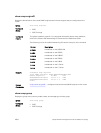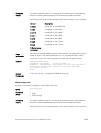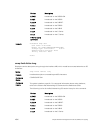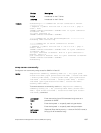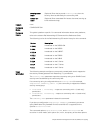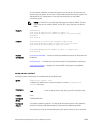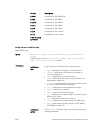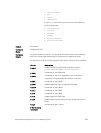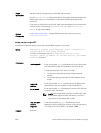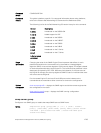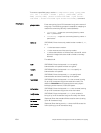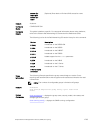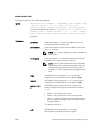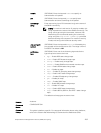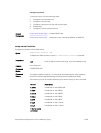
Usage
Information
Dell Networking OS supports up to 16 SNMP trap receivers.
For the cam-utilization notification option, the system generates syslogs and
SNMP traps when the L3 host table or route table utilization goes above the
threshold.
If you do not configure this command, traps that controlled by this command are
not sent. If you do not specify a notification-type and notification-
option, all traps are enabled.
Related
Commands
snmp-server community — enables SNMP and sets the community string.
snmp-server engineID
Configure the name for both the local and remote SNMP engines on the router.
Syntax
snmp-server engineID [local engineID] [remote ip-address vrf
vrf-name udp-port port-number engineID]
To return to the default, use the no snmp-server engineID [local
engineID] [remote ip-address vrf vrf-name udp-port port-number
engineID
] command.
Parameters
local engineID
Enter the keyword local followed by the engine ID number
that identifies the copy of the SNMP on the local device.
Format (as specified in RFC 3411): 12 octets.
• The first four octets are set to the private enterprise
number.
• The remaining eight octets are the MAC address of the
chassis.
remote ip-
address
Enter the keyword remote followed by the IP address that
identifies the copy of the SNMP on the remote device.
vrf vrf-name Enter the keyword vrf followed by the name of the VRF that
is used to reach the device.
NOTE: Use this attribute to specify the VRF that is used
by the SNMP engine to reach the device. If no VRF is
specified, then the default VRF is used.
udp-port port-
number
engineID
Enter the keywords udp-port followed by the user
datagram protocol (UDP) port number on the remote device.
The range is from 0 to 65535. The default is 162.
Defaults As above.
1702
Simple Network Management Protocol (SNMP) and Syslog



